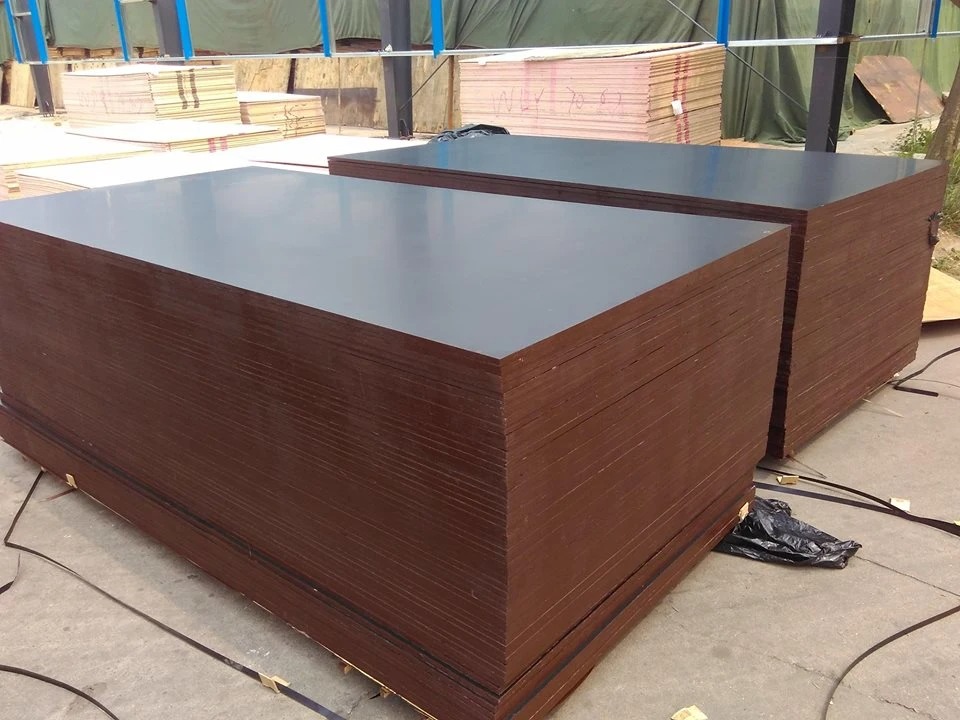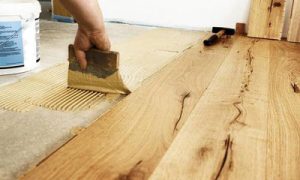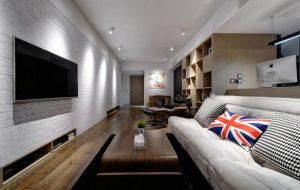It is often said that plywood formwork for concrete is laminated plywood produced from plywood. Actually, that’s not accurate. Laminate plywood is just one of many building plywood. With the development of modern construction methods, cast-in-place concrete structure has been widely used in engineering construction. Accordingly, the quality and design level of building formwork system are also improving and developing rapidly. The types of building formwork are also increasing.
Plywood formwork includes steel formwork, bamboo formwork and even plastic formwork. Wood formwork includes not only laminated plywood, but also regular plywood formwork without laminated paper, and triple laminates (also formwork). “Triple plywood” here does not mean “triple plywood”. The thickness of “three-layer plywood” is generally 2.7~3.6mm and the thickness of “three-layer plywood formwork” can be up to 18mm. It is much less likely to use a three-ply formwork than plywood formwork. Bamboo and wood stencils are currently used in most projects, with plywood stencils used more than 50% of the time. Bamboo plywood is a special high-grade formwork. If the project scale is large, good quality requirements are very high, bamboo plywood is also a good choice. But bamboo chips are more expensive, because they are stronger and more reusable. However, the most widely used formwork is the plywood formwork. Piles of plywood formwork are often seen next to projects under construction in the city. Many small and medium sized projects now use plywood formwork without film paper. For quality critical items, use clear water formwork – black or brown film plywood.
Advantages of film plywood
Large format: film faced plywood sizes 2440×1220mm , 915 * 1830mm, reduce the number of joints, improve the working efficiency of the mold. No warping, no deformation, no cracking, good water resistance, high turnover. Demoulding is easy, only 1/7 of a steel mold.
Light weight: easier to use in high-rise buildings and bridge construction.
Times of use: it can be reused for more than 12 times under proper storage.
Concrete pouring: the pouring surface is smooth and beautiful, minus the second plastering process of the wall, the decoration cycle of the direct veneer can be reduced by 30%.
Corrosion resistance: does not contaminate the concrete surface.
Good thermal insulation: conducive to winter construction, can be used to transform the plywood formwork.
Good construction performance: nails, saws, drills and other performance are better than bamboo plywood, small steel plate, can be divided into various shapes according to the construction needs.
What is the meaning of the use of the film faced plywood?
First of all, the use of plywood for formwork can speed up construction progress, improve production quality, reduce engineering costs and implement civilized construction, which is very important. In terms of construction technology, many difficult projects will be concentrated on the concrete structure, but in the process of concrete use, the main technology is concentrated on the formwork project.
The use of film plywood can solves this problem. The use of such film faced plywood can complete various decorative concrete surfaces and fair-faced concrete surfaces, which not only reduces the material and labor costs of wet work on the concrete surface, but also increases the grades in structural engineering.
We must be careful when purchasing film plywood, otherwise we will cause the entire work to fail due to temporary negligence.
Therefore, when purchasing, we should look at the color of the surface of the product. For a good-quality film plywood, the color tone on the surface is very clear, and the depth of the color is the same.
When consumers buy plywood for formwork, they often encounter a big confusion about how to identify the dryness of wood. Here are a few tricks for you to quickly see if the wood is dry without professional tools:
- The weight of the wood. After the wood is naturally air-dried, it is naturally lighter than the wood that contains water. To pick in the building materials market, you can use this trick.
- Wood feel. It is relatively dry if it is not cold to the touch.
- Knock on the knuckles, the sound is crisp and dry, and the wet sound is relatively dull.
- Listen to the sound of the woodworking planer, the sound of the planer is crisp, the wood that is planed is smooth, and the shavings are hot, indicating that it is dry, otherwise it is wet.
- Pinch a handful of sawdust to see if it feels dry.
- Put a piece of facial tissue under the opened wood, check whether it is wet on the second day, and you can basically judge the dryness of the wood.



